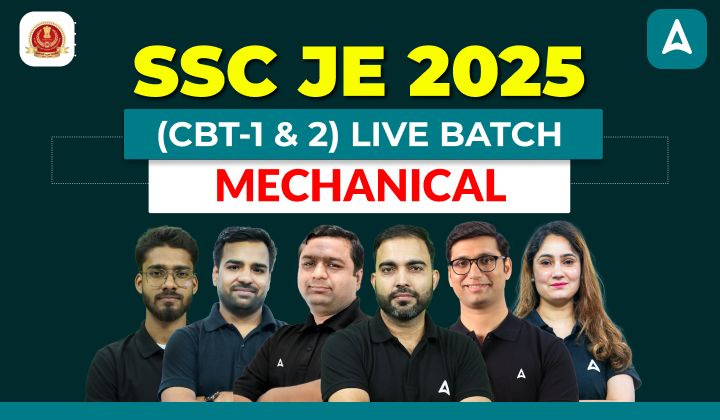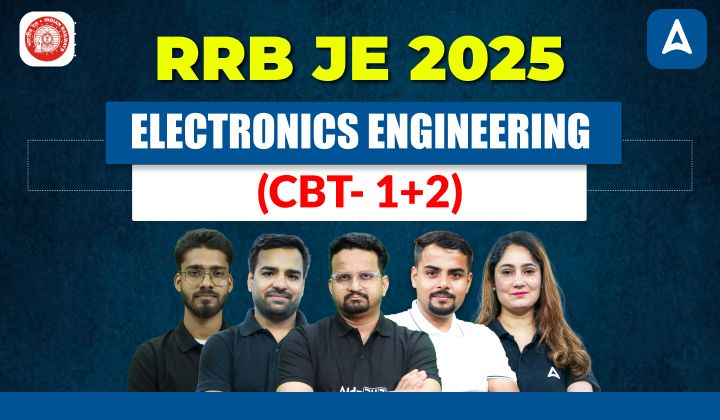Table of Contents
The GATE 2026 Electrical Engineering syllabus is given in this article. GATE will likely be conducted by IIT Guwahati this year. While the official exam dates are yet to be announced, GATE 2026 is typically held in February across multiple sessions. Aspirants preparing for the Electrical Engineering (EE) paper should begin by understanding the complete syllabus to plan their studies effectively. A thorough knowledge of the syllabus helps in identifying key topics and areas that carry weight in the exam. Below is the detailed GATE EE syllabus to help you prepare with clarity. Bookmark this page for all the latest updates.
GATE Electrical Engineering Syllabus 2026
The GATE Electrical Engineering Syllabus 2026 is shared here to guide aspirants in preparing more effectively. The Graduate Aptitude Test in Engineering (GATE) is an online computer-based exam designed to test a candidate’s academic knowledge, technical abilities, and understanding of core concepts.
If you are preparing for GATE 2026 in the Electrical Engineering branch, it is important to go through the detailed syllabus provided here. This will help you plan your studies in the right direction. Make sure to read the complete article to get a clear idea of the GATE Electrical Engineering Syllabus 2026, and don’t forget to bookmark this website to stay updated with the latest news on upcoming Engineering Exams.
GATE EE Syllabus 2026-Overview
Candidates must check out the table shown below for a brief overview of the GATE Electrical Engineering Syllabus 2026.
| GATE Electrical Engineering Syllabus 2026 | |
| GATE Full Form | Graduate Aptitude Test for Engineering (GATE) |
| GATE 2026 Conducting Authority | IIT Guwahati |
| GATE 2026 Number of Papers | 30 |
| GATE 2026 Mode of Exam | Computer-Based Test (CBT) |
| Number of Questions Asked | 65 |
| GATE 2026 Marks Distribution | 15 Marks (General Aptitude) + 85 Marks (Subject Questions)= 100 Marks (Total) |
| GATE Exam Language | English |
| GATE Marking Scheme | One Mark and Two Marks |
| Negative Marking | Yes |
GATE Electrical Exam Pattern 2026
The GATE 2026 Electrical Engineering question paper will comprise 65 questions from 3 sections, viz General Aptitude, Engineering Mathematics, and Specific Subject. All the questions will be of three types, namely MCQs, MSQs, and NATs. The GATE 2024 Electrical Exam Pattern is given in this section:
| GATE Electrical Engineering Exam Pattern 2026 | |
| GATE 2026 Examination Mode | Computer-Based Test (Online) |
| GATE 2026 Exam Duration | 3 Hours |
| GATE Exam 2026 No. of Subjects | 30 Subjects |
| GATE Exam 2026 Total Marks | 100 Marks |
| GATE Exam 2026 Number of Questions | 10 (GA) + 55 (subject) = 65 Questions |
| GATE 2026 Type of Questions | Multiple Choice Questions, Multiple Select Questions, and Numerical Answer Type Questions |
GATE Electrical Engineering Syllabus PDF
Candidates preparing for the GATE Electrical Engineering exam can easily download the syllabus PDF using the direct link provided below. Knowing the complete syllabus is very important for effective preparation and success in the upcoming GATE examination. The GATE Electrical Engineering Syllabus 2026 acts as a guide to help you plan your studies according to the exam requirements. Use the direct link given here to download the syllabus in PDF format.
GATE Electrical Engineering Syllabus 2026- Click Here
GATE Electrical Syllabus 2026 In Detail
The key points related to the GATE Electrical Engineering Syllabus 2026 are given below for the proper understanding of the candidates:
Section 1: Engineering Mathematics
The key points related to the Engineering Mathematics Syllabus are given below:
Linear Algebra:
- Matrix Algebra,
- Systems of linear equations,
- Eigenvalues,
- Eigenvectors.
Calculus:
- Mean value theorems,
- Theorems of integral calculus,
- Evaluation of definite and improper integrals,
- Partial Derivatives,
- Maxima and minima,
- Multiple integrals,
- Fourier series,
- Vector identities,
- Directional derivatives,
- Line integral,
- Surface integral,
- Volume integral,
- Stokes’s theorem,
- Gauss’s theorem,
- Divergence theorem,
- Green’s theorem.
Differential equations:
- First-order equations (linear and nonlinear),
- Higher-order linear differential equations with constant coefficients,
- Method of variation of parameters,
- Cauchy’s equation,
- Euler’s equation,
- Initial and boundary value problems,
- Partial Differential Equations,
- Method of separation of variables.
Complex Variables:
- Analytic functions,
- Cauchy’s integral theorem,
- Cauchy’s integral formula,
- Taylor series,
- Laurent series,
- Residue theorem,
- Solution integrals.
Probability and Statistics:
- Sampling theorems,
- Conditional probability,
- Mean, Median, Mode, Standard Deviation,
- Random variables,
- Discrete and Continuous distributions,
- Poisson distribution,
- Normal distribution,
- Binomial distribution,
- Correlation analysis,
- Regression analysis.
Section 2: Electric circuits
The Electric circuits sections from the GATE EE Syllabus consist of the following topics:
- Network elements:
- ideal voltage and current sources,
- dependent sources, R, L, C, M elements;
- Network solution methods: KCL, KVL, Node, and Mesh analysis;
- Network Theorems: Thevenin’s, Norton’s, Superposition, and Maximum Power Transfer
theorem; - Transient response of DC and AC networks,
- sinusoidal steady-state analysis,
- resonance,
- two-port networks,
- balanced three-phase circuits,
- star-delta transformation,
- Complex power and power factor in AC circuits.
Section 3: Electromagnetic Fields
The Electromagnetic Fields sections from the GATE EE Syllabus 2026 consist of the following topics:
- Coulomb’s Law,
- Electric Field Intensity,
- Electric Flux Density,
- Gauss’s Law,
- Divergence,
- Electric field and potential due to a point,
- Lines
- plane and spherical charge distributions,
- Effect of dielectric medium,
- Capacitance of simple configurations,
- Biot-Savart’s law,
- Ampere’s law,
- Curl,
- Faraday’s law,
- Lorentz force,
- Inductance,
- Magnetomotive force,
- Reluctance,
- Magnetic circuits,
- Self and Mutual inductance of simple configurations.
Section 4: Signals and Systems
The Signals and Systems sections from the GATE Electrical Syllabus 2026 consist of the following topics:
- Representation of continuous and discrete time signals,
- shifting and scaling properties,
- linear time-invariant and causal systems,
- Fourier series representation of continuous
- and discrete-time periodic signals,
- sampling theorem,
- Applications of the Fourier Transform for continuous and discrete time signals,
- Laplace Transform and Z transform.
- R.M.S. value,
- average value calculation for any general periodic waveform
Section 5: Electrical Machines
The Electrical Machines sections from the GATE EE Syllabus consist of the following topics:
- Single-phase transformer: equivalent circuit,
- phasor diagram,
- open circuit and short circuit tests,
- regulation and efficiency;
- Three-phase transformers: connections, vector groups,
- parallel operation; Auto-transformer,
- Electromechanical energy conversion principles;
- DC machines: separately excited,
- series and shunt,
- motoring and generating mode of operation and their characteristics,
- speed control of DC motors;
- Three-phase induction machines: principle of operation,
- types, performance, torque-speed characteristics,
- no-load and blocked-rotor tests,
- equivalent circuit,
- starting and speed control;
- Operating principle of single-phase induction motors.
- Synchronous machines: cylindrical and salient pole machines,
- performance and characteristics,
- regulation and parallel operation of generators,
- starting of synchronous motors;
- Types of losses and efficiency calculations of electric machines
Section 6: Power Systems
The Power Systems sections from the GATE EE Syllabus 2026 consist of the following topics:
- Basic concepts of electrical power generation,
- AC and DC transmission concepts,
- Models and performance of transmission lines and cables,
- Economic Load Dispatch (with and without considering transmission losses),
- Series and shunt compensation,
- Electric field distribution and insulators,
- Distribution systems,
- Per-unit quantities,
- Bus admittance matrix,
- Gauss-Seidel and Newton-Raphson load flow methods,
- Voltage and Frequency control,
- Power factor correction,
- Symmetrical components,
- Symmetrical and unsymmetrical fault analysis,
- Principles of over-current,
- differential,
- directional and distance protection;
- Circuit breakers,
- System stability concepts,
- Equal area criterion.
Section 7: Control Systems
The Control Systems sections from the GATE EE Syllabus consist of the following topics:
- Mathematical modeling and representation of systems,
- Feedback principle,
- transfer function,
- Block diagrams and Signal flow graphs,
- Transient and Steady-state analysis of linear time invariant systems,
- Stability analysis using Routh-Hurwitz and Nyquist criteria,
- Bode plots,
- Root loci,
- Lag, Lead, and Lead-Lag compensators;
- P, PI, and PID controllers;
- State space model,
- Solution of the state equations of LTI systems
Section 8: Electrical and Electronic Measurements
The Electrical and Electronic Measurements sections from the GATE Electrical Engineering Syllabus 2026 consist of the following topics:
- Bridges and Potentiometers,
- Measurement of voltage,
- current, power,
- energy and power factor;
- Instrument transformers,
- Digital voltmeters and multimeters,
- Phase, Time, and Frequency measurement;
- Oscilloscopes,
- Error analysis.
Section 9: Analog and Digital Electronics
The Analog and Digital Electronics sections from the GATE Electrical Syllabus 2026 consist of the following topics:
- Simple diode circuits: clipping, clamping, rectifiers;
- Amplifiers: biasing, equivalent circuit, and frequency response;
- oscillators and feedback amplifiers;
- operational amplifiers: characteristics and applications;
- single-stage active filters,
- Active Filters: Sallen Key,
- Butterworth,
- VCOs and timers,
- combinatorial and sequential logic circuits,
- multiplexers,
- demultiplexers,
- Schmitt triggers,
- sample and hold circuits,
- A/D and D/A converters.
Section 10: Power Electronics
The Power Electronics sections from the GATE Electrical Syllabus consist of the following topics:
- Static V-I characteristics and firing/gating circuits for Thyristor,
- MOSFET, IGBT;
- DC to DC conversion: Buck, Boost, and Buck-Boost Converters;
- Single and three-phase configuration of uncontrolled rectifiers;
- Voltage and Current commutated Thyristor-based converters;
- Bidirectional AC to DC voltage source converters;
- Magnitude and
- Phase of line current harmonics for uncontrolled and thyristor-based converters;
- Power factor and Distortion Factor of AC to DC converters;
- Single-phase and three-phase voltage and current source inverters,
- sinusoidal pulse width modulation.

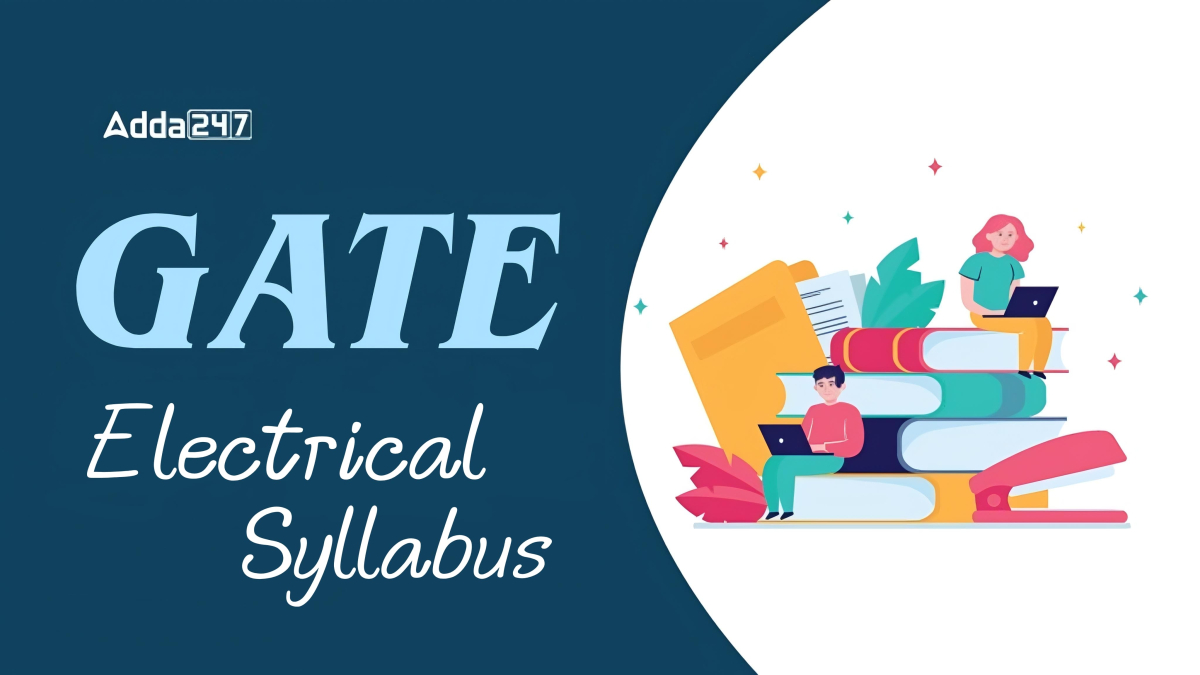


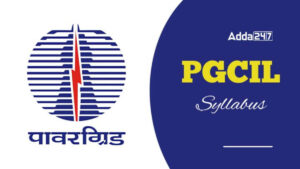 PGCIL Field Supervisor Syllabus and Exam...
PGCIL Field Supervisor Syllabus and Exam...
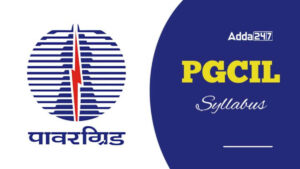 PGCIL Field Engineer Syllabus 2025, Exam...
PGCIL Field Engineer Syllabus 2025, Exam...
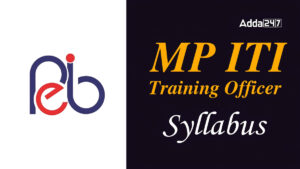 MP ITI Training Officer Syllabus 2025, S...
MP ITI Training Officer Syllabus 2025, S...



